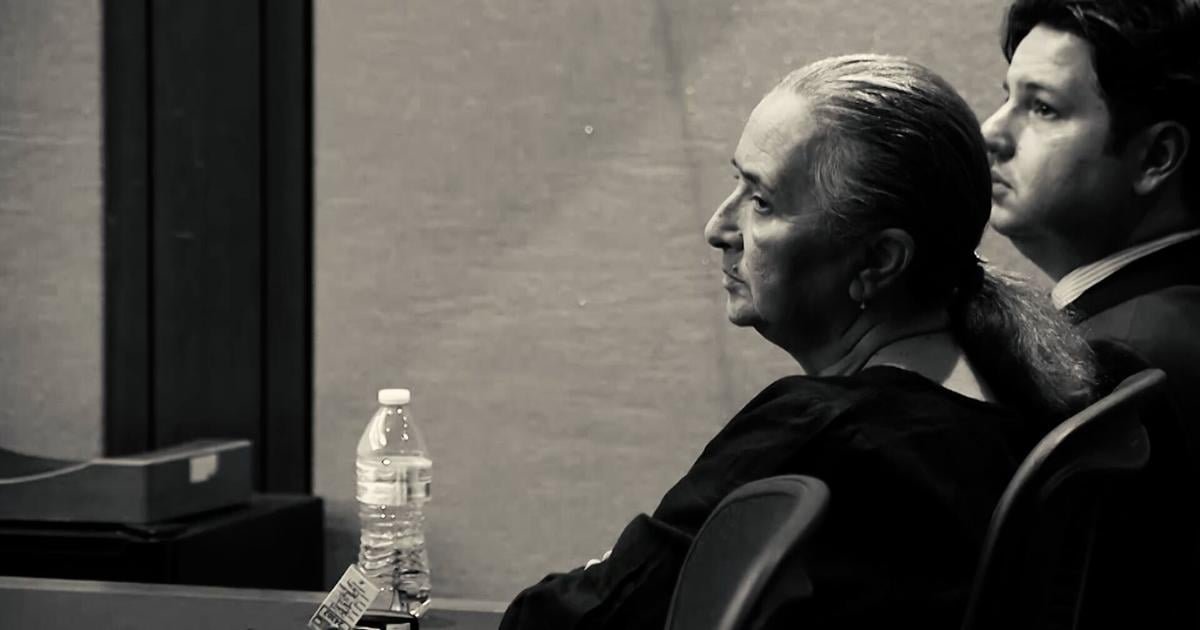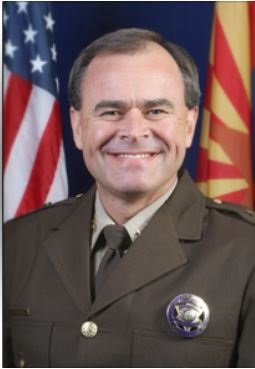On the night of April 10, Nogales police officers shot dead a 31-year-old Nogales man, Edrey Toledo Ochoa, during a clash outside Circle K on Mariposa Road.
The deadly shooting sparked protests from some community members, including Ochoa’s family. Other residents defended the actions of law enforcement.
Still, authorities have released limited information about the incident, and one of the key witnesses, Ochoa himself, is dead and unable to provide his view.
Below is a summary of what NI has learned so far and what we don’t know.
At 7:49 pm on Monday, April 10, the Nogales Police Department recorded a call from an officer requesting “Circle K units.”
In a news release issued the next day, the NPD said officers contacted Ochoa after noticing him carrying a gun and wearing “what appeared to be a ballistic vest.”
The incident then escalated, with Ochoa allegedly brandishing two knives at officers, according to the NPD. The NPD said officers gave Ochoa “numerous orders” to drop the knife, and said officers used non-lethal methods before firing the firearm.
Meanwhile, two cellphone videos, believed to have been taken by nearby witnesses, provide further glimpses of the shooting.
One video, spanning 41 seconds, shows Ochoa standing about 10 feet away from two NPD officers. In the video, Ochoa can be seen spinning on the spot and waving his hand as the officer stands in the back of the patrol car and aims his firearm. The officer then roams around the police car and approaches Ochoa. Multiple shots are heard in the video as Ochoa falls to the ground. After Ochoa falls, there is a short pause, and then he is shot three times.
A second video, shot from behind the officers, shows Ochoa leaning forward and swinging his arms around, reaching into his left front pocket at one point. He has a holster-like object on his hip, but doesn’t seem to touch it during the 25-second clip of his video. At one point in the video, Ochoa turns his back away from the cop, raises his hands in the air, then walks back towards the cop and continues to move erratically.
“He’s armed,” said a bystander in Spanish in the second video. “They’re shooting him with electricity,” the person added, presumably pointing to a taser.
Cell phone videos are low quality and dark. It’s not clear in either video what Ochoa is holding in his hand.
Do you have body camera footage?
Nogales police do not use body cameras, so there is no body camera footage of the encounter.
Over the past few years, NPD has considered that possibility several times. Especially as public scrutiny of police across the United States has increased.
In 2014, former Nogales Police Chief Derek Arnson told NI that his department was actively looking for a body camera vendor, but the program never rolled out. Then, in 2018, the issue resurfaced. Current chief Roy Bermudez described the body camera as a “good idea” at a council meeting at the time.
Still, citing the high cost of the 2018 program, Bermudez said at a council meeting: for responsibility. “
In 2019, NPD again considered body cameras. In February of that year, the department announced his five-year program to implement cameras, equipment updates, training, and data storage. The cost was estimated at approximately $322,600.
“It builds trust with the community,” Bermudez told NI at the time.
Then, in November 2019, Bermudez said the body camera was on hold for the time being, estimating the total cost to be around $422,000. NPD would consider subsidizing the body camera program, Bermudez said at the time, adding that it would review the plan during the 2020-2021 fiscal year.
Nationally, police departments cite high costs as a reason for deterring body camera programs.A U.S. Department of Justice study conducted in 2016 found that only 47% of general-purpose law enforcement agencies use body cameras. was doing. About 77% of departments without body cameras cite cost, including data storage, as a major issue.
what happened to the officer?
Two unnamed police officers reportedly opened fire during the April 10 shooting.
According to the NPD, one police officer had worked in the department for two and a half years. He’s been working there for over 8 years.
On April 10, shortly after the shooting, Bermudez said he was still assessing the employment status of officers, but said paid administrative leave was typical for such encounters.
“It’s basically just piecing together what happened,” Bermudez said at the time.
By Tuesday, April 11th, officers were placed on paid administrative leave. They are still on vacation as of Thursday, April 20, the chief said.
In the May 2021 shooting of 39-year-old truck driver Glenn Cockrum Jr., officers involved in the NPD were put on leave of absence despite being cleared to return about a week later.
Can I legally photograph a police officer?
At least two people recorded the April 10 shooting on their mobile phones. Was it legal?
“Individuals have well-established First Amendment rights to record police officers and other government officials performing their official duties,” said KM Bell, a full-time attorney at the ACLU in Arizona.
Arizona legislators have tried unsuccessfully to undermine that right over the past few months. In the summer of 2022, former Gov. Doug Ducey signed House Bill 2319 into law. The law would have prohibited civilians from filming video “within 8 feet” of law enforcement activity. However, the law met with swift opposition from civil rights advocates, and a federal judge eventually granted a preliminary injunction against the law, blocking it before it could take effect.
Of HB 2319, Bell said, “There is no enforcement.
Filming an officer does not exempt the individual from other laws and ordinances, Bell noted. Bell also said that the person filming the video cannot interfere with the police’s duties or the investigation.
But the right to record police applies “so long as the individual is in the right place,” Bell said.
For example, Bell adds: There you have the same right to record at that time. “
And generally, if a person witnesses a potential crime, or even a civil case like a car accident, they may be called to the stand during court proceedings.
“You may be subpoenaed to appear in court as a witness,” Bell added.
How long will the investigation take?
The Arizona Department of Public Safety is currently leading a criminal investigation into the April 10 shooting in Nogales. Past investigations have taken him three to four months to complete. Once the investigation is closed, the Santa Cruz County Attorney’s Office will determine whether the evidence indicates whether the shooting was justified or illegal.
On Christmas Day 2020, the Santa Cruz County Sheriff’s Deputy killed John, 32, after responding to a 911 call that reported a man, later identified as Moreno, was attempting to burgle a woman’s home in Rio Rico. I shot Moreno.
The nearby Pima County Sheriff’s Department conducted an investigation and issued a report in early April 2021, less than four months later.
In May 2021, officers shot and killed Cockrum Jr. after driving for an hour on Interstate 19, which ends at North Grand Avenue under Walmart. By September 2021, he said the DPS had completed its investigation and handed over a 700-page report to the county attorney. The report contained testimony, recordings, photographs, and other materials.
In both cases, George Silva County Attorney released a copy of the investigative report to NI after informing the relevant agencies of its conclusions.
How has Silva’s office ruled in past cases?
The investigations conducted by DPS are intended to provide insight into the circumstances of the shooting. However, the final decision on whether to prosecute the officers rests on Silva’s shoulders.
With the two fatalities involving the officers mentioned above, Silva ruled the shooting justified.
“After a thorough review of reports, eyewitness accounts, recordings, photographs and other supporting material, we found that the shooting was justified,” Silva told the NPD and sheriff’s office in 2021 regarding the Cockrum incident. I am writing in a letter addressed to you.
Speaking to NI in 2021, Silva cited the standard of “objective reasonableness,” a legal guideline established in a 1989 Supreme Court ruling.
If an officer “reasonably believes” that he must use lethal force to stop an imminent threat of death or serious injury, then the use of lethal force is generally justified.
















